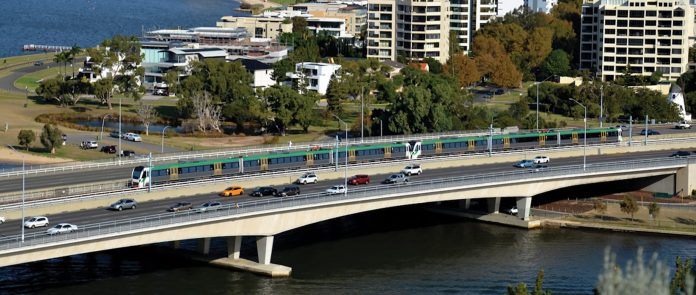
Sixty-three years ago, when we were schoolkids, the government invited its Perth citizens to walk across the new Narrows Bridge. There wasn’t much to see, all the genius of construction was underfoot and underwater.
The date, November 13, 1959, isn’t earmarked anywhere on WA’s official calendars but it deserves our highest salutes.
The bridge instantly changed travel for motorists, saving time and money in a form that doesn’t infringe on the landscape and maintains a modern-look today.
Until that date, the primary north-south road links were the causeway at East Perth and the Canning Highway to Fremantle. It is unimaginable today to ponder the city’s traffic without the Narrows with hundreds of thousands of vehicle crossings every day.
For the official opening, a booklet was issued with Main Roads WA providing advice on how to drive on the bridge, including weaving (merging). It said: “When a vehicle has to stop at the entry to a weaving section the usefulness and capacity of the facility is destroyed.”
Designed in Britain, the bridge was the largest precast, pre-stressed concrete bridge in the world. Its speed limit was 50 mph (80km/hr).
The bridge was approved by the Hawke state Labor government in November 1954. The government wanted a bridge that didn’t detract from the view of King’s Park from the city or the vista from Kings Park to the city.
Main Roads WA despatched their senior engineer to Britain and America to research bridge designs.
During construction, Deputy Premier John Tonkin announced the proposed name: Golden West Bridge. But Golden West was the name of a soft drink and public scorn called for a rethink.
It came from the bridge’s site, the narrow point of the Swan River, between the city and South Perth.
A later report said: “It took four years to reclaim the sludgy, silty land by dredging shells and sand from Melville Water, with one dredging machine working double shifts to move 3.4 million cubic metres of fill.
“They had a 10-tonne pile driving hammer powered by the steam engine. The pile would be driven deep into the riverbed, and that’s why it would be so noisy in South Perth.”
The bridge, costing £1.5 million, took two years, five months to complete, built by Danish firm Christiani and Nielsen in conjunction with local engineering outfit J. O. Clough & Son.
It was officially opened by Governor Charles Gairdner, unveiling a plaque on the bridge with Premier Sir David Brand, Commissioner of Main Roads, Digby Leach, and Works Minister Gerald Wild.
Governor Gairdner was first to drive a car across the new bridge,
In 1996, decorative night lighting was added. In 1999, the Narrows Bridge was entered on the State’s heritage register and the Institution of Engineers named it a national engineering landmark.
Visitors today would never guess that the Narrows is actually three separate bridges, designed and built in different eras and with totally different construction techniques.
In 2001, the $49 million duplicate bridge was opened to the west of the original. Premier Richard Court announced that groups of 20 people would be escorted across the bridge at 15–20 minute intervals.
In 2005, the railway bridge was constructed in the gap between the two traffic bridges. Two years later, passenger trains began crossing the Narrows with the opening of the Mandurah railway line.
The Narrows, Perth’s faithful bearer of cars, vans, trucks, buses, pedestrians, bicycles and trains, has evolved over a generation as the city’s most useful, unobtrusive and celebrated landmark.


































